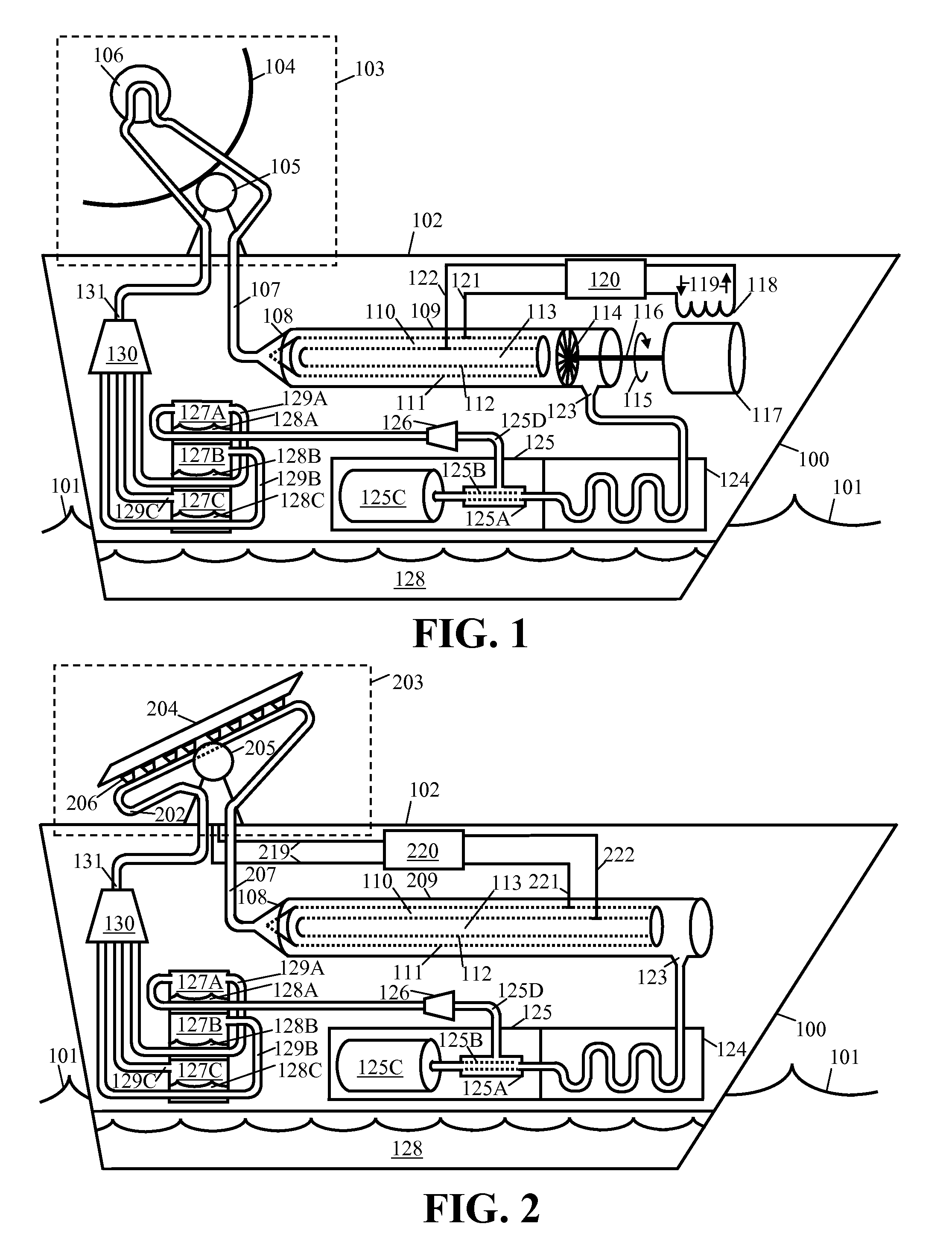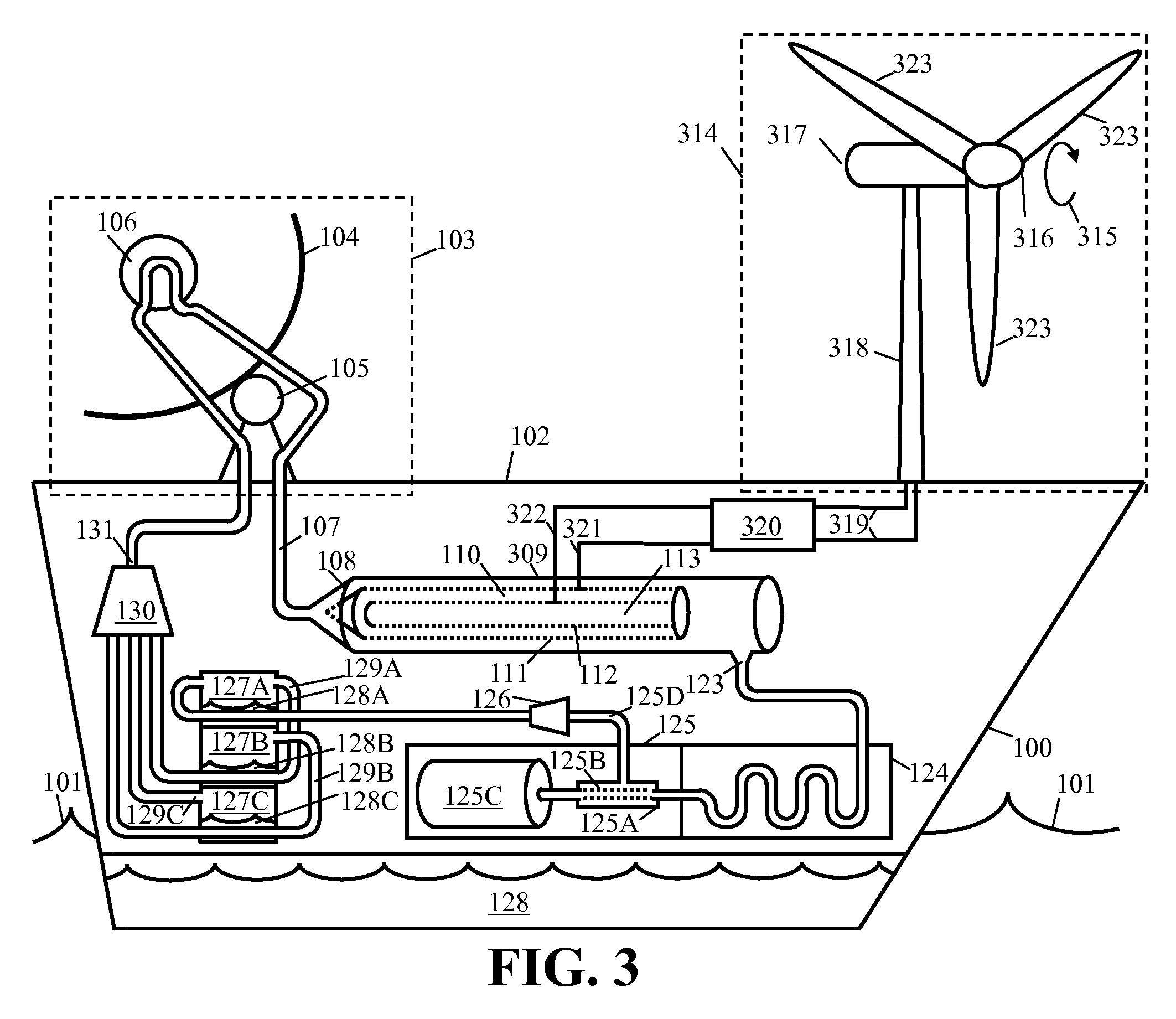Solar cogeneration vessel
a cogeneration vessel and solar energy technology, applied in the direction of machines/engines, electric devices, process and machine control, etc., can solve the problems of reducing the power efficiency of photovoltaic cells, increasing substrate temperature may exponentially shorten the durability of photovoltaic cells for a given set of environmental conditions, and reducing the levelized cost of energy (lcoe). , the effect of eliminating the cost of land us
- Summary
- Abstract
- Description
- Claims
- Application Information
AI Technical Summary
Benefits of technology
Problems solved by technology
Method used
Image
Examples
Embodiment Construction
[0022]The present invention pertains to a mobile buoyant energy recovery system featuring novel solar heat management that ensures highly efficient energy storage and abundant feedstock in combination with a remote control system and algorithm for supervisory control and data acquisition enabling optimal configuration, navigation and autonomous operation of the system. The following description contains specific information pertaining to various embodiments and implementations of the invention. One skilled in the art will recognize that one may practice the present invention in a manner different from that specifically depicted in the present specification. Furthermore, the present specification need not represent some of the specific details of the present invention in order to not obscure the invention. A person of ordinary skill in the art would have knowledge of such specific details not described in the present specification. Others may omit or only partially implement some fea...
PUM
 Login to View More
Login to View More Abstract
Description
Claims
Application Information
 Login to View More
Login to View More - R&D
- Intellectual Property
- Life Sciences
- Materials
- Tech Scout
- Unparalleled Data Quality
- Higher Quality Content
- 60% Fewer Hallucinations
Browse by: Latest US Patents, China's latest patents, Technical Efficacy Thesaurus, Application Domain, Technology Topic, Popular Technical Reports.
© 2025 PatSnap. All rights reserved.Legal|Privacy policy|Modern Slavery Act Transparency Statement|Sitemap|About US| Contact US: help@patsnap.com



